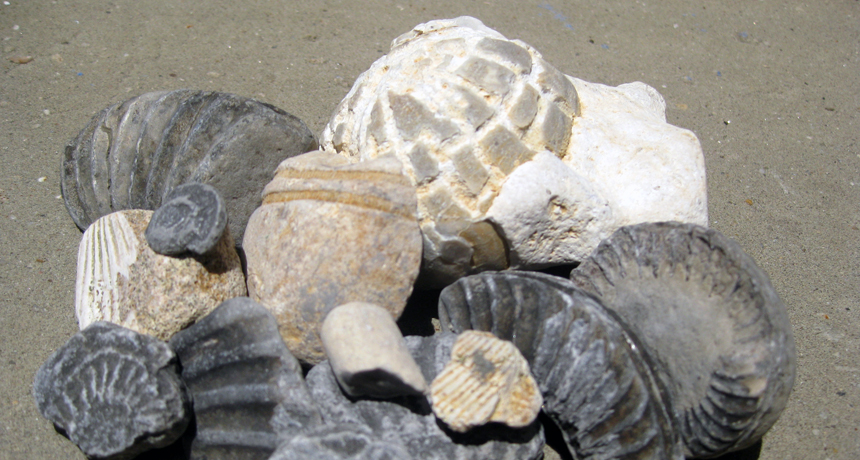Explainer: How a fossil forms

A collection of nearly 200-million-year-old fossils that the author retrieved from the beach on England’s “Jurassic Coast” during a recent vacation.
Sarah Zielinski

A collection of nearly 200-million-year-old fossils that the author retrieved from the beach on England’s “Jurassic Coast” during a recent vacation.
Sarah Zielinski